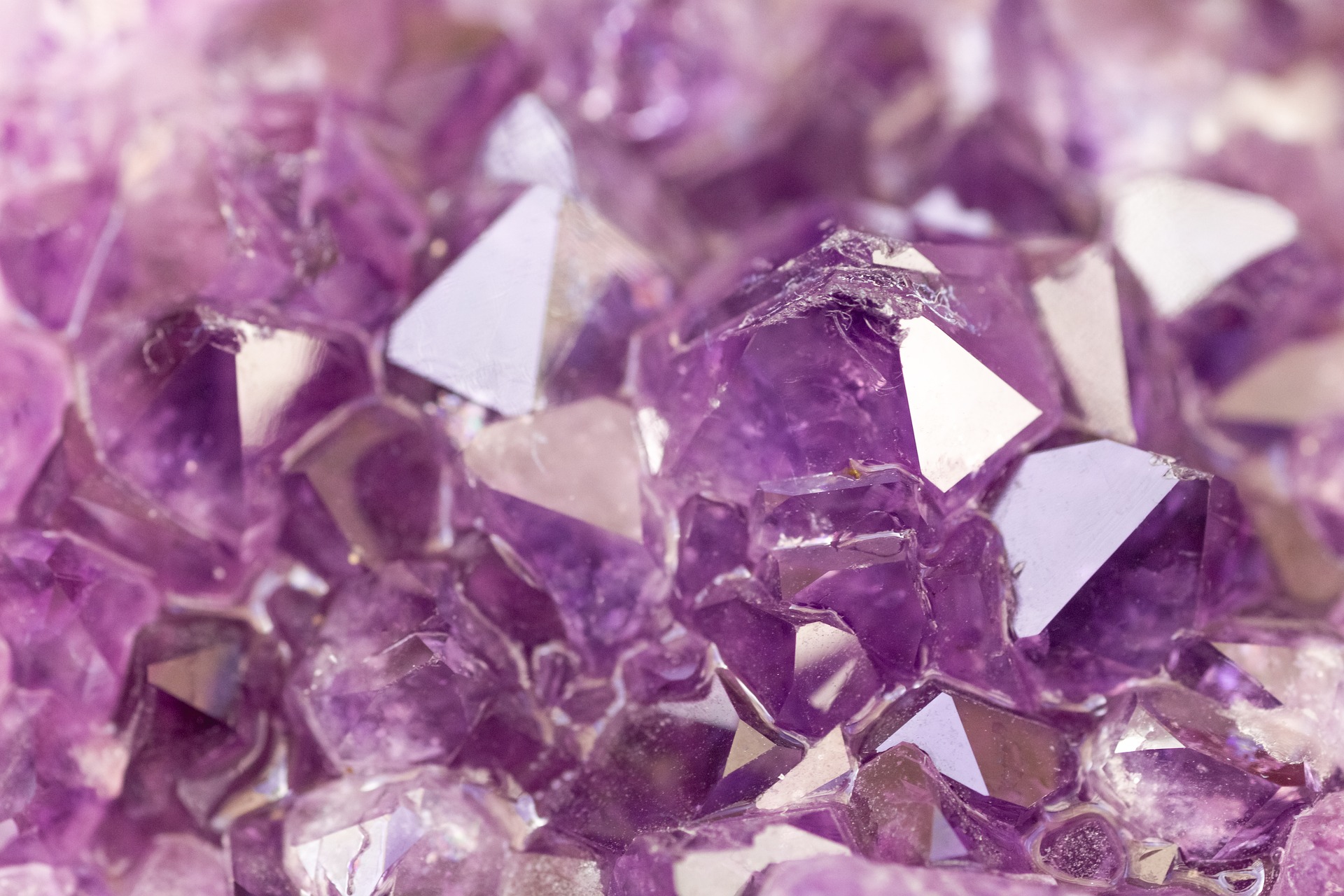The February birthstone, the amethyst, was at one point in history reserved for royalty. Learn more about this gem, which is long known for producing calmness—as well as serving as a remedy for drunkenness!
Amethyst’s Color
Amethysts are a type of quartz often found in geodes amidst cooled lava. Amethyst ranges in color from pale lilac to deep reddish purple. It receives its purple colors from the presence of iron and natural irradiation under the Earth’s surface. Gems can show color zoning with both uneven color distribution and color bands.
Several treatments can change the color of an amethyst. Those gems, though, are no longer considered amethyst, but rather just a different colored quartz variety. Amethyst can be heated to colors like yellow, green, blue, and red-orange.

Meanings, Symbolism, and Folklore
- Early Greek mythology associated amethyst with Bacchus, the god of wine, because of its wine-like color.
- The word “amethyst” is derived from the Greek word amethystos, meaning “not drunk” or “a remedy for drunkenness”
- The Ancient Greeks believed a person could drink all night and remain sober if they had an amethyst on their person.
- Its calming presence was thought to produce soothing dreams, producing clarity and peacefulness to the waking mind.
- Renaissance Europeans believed it calmed lovers overrun by passion.
- Amethyst was believed to keep those who wore it clear-headed and quick-witted in battle and business affairs.
- According to Christian lore, the colors of an amethyst referenced the wounds and suffering of Jesus, and it was used to aid in healing wounds.
- For those who celebrate a February birthday, amethyst is a symbol of personal empowerment and inner strength.
- St. Valentine, the patron of love, is said to have worn an amethyst ring carved with the image of Cupid.
- Camillo Leonardi, an Italian astronomer and astrologer, wrote that amethyst quickens intelligence and rids you of evil thoughts.
- It was once believed that rubbing a moistened amethyst on a pimple would cure them.
- Amethyst is given to celebrate a couple’s sixth wedding anniversary.
- A dream of receiving an amethyst as a gift brings good luck.
- A dream of giving an amethyst means you forgive the recipient.

History of Amethyst
Ancient Egyptians were believed to use amethysts in amulets as a form of prayer and for protection from harm.
Catherine the Great of Russia had a liking for the gem that led to a collection of amethyst necklaces, earrings, and other ornamental jewelry.
It was at one time considered to be of equal value to ruby, emerald, and sapphire.
Where Is Amethyst Found?
Russia was the major source of amethyst until the 19th century, before large deposits were found in Brazil, making it available in abundance.
Today, areas of the world like Africa, South America, and Bolivia are sources of the gem. It is also found in the United States in Arizona and North Carolina.
Amethyst in Jewelry
Amethyst is readily available in all sizes, and does not see a dramatic rise in price per carat.
Lower-graded amethyst can be carved and shaped into beads and other objects.
With a Mohs Hardness rating of 7.0, amethyst is appropriate for daily use in jewelry, like rings. Be careful when storing next to harder gems, as there is a risk of scratching!
Learn More
